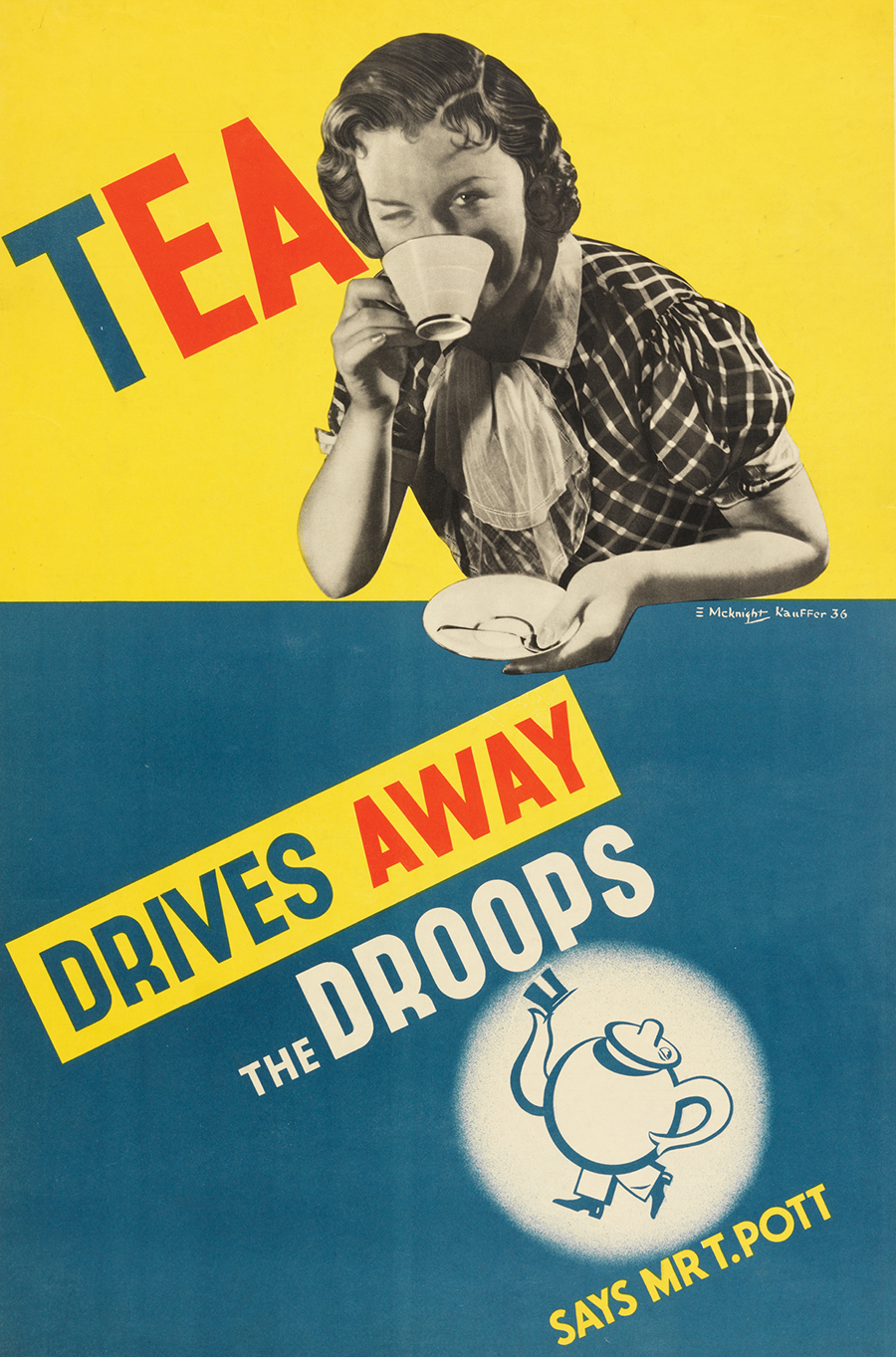
October 7, 2020
E. McKnight Kauffer: Reappreciation Delayed

Poster, American Airlines to Paris, 1950 (Cooper Hewitt, Smithsonian Design Museum; Photo by Matt Flynn © Smithsonian Institution).
This Fall the Cooper Hewitt Museum in New York had planned to open the first major exhibition of art and design work by the legendary modern poster and book jacket designer E. McKnight Kauffer — who accomplished so much more in his design life too. If some of you have not heard of E.McK, that is in part the rationale for mounting this original, deeply researched show. Although internationally celebrated, the Montana-born, American ex-patriot who lived, worked and was held in high esteem in London for much of his professional life there, never entirely reached the same status in the U.S. Despite a major solo-exhibition, only the second for a poster artist, at the Museum of Modern Art in 1937 (the first was for A.M. Cassandre in 1936) before permanently returning to New York in 1940. When war erupted in Europe, Kauffer was never personally satisfied with his life’s work in the city. This exhibition curated by Caitlin Condell and Emily Orr is intended to acquaint and reintroduce folks in the current art and design worlds and the museum-going public to the genius that created the quintessence of contemporary graphic design – a Modernist who introduced art infused advertising. His prodigious poster production running the gamut from representational painting to surrealist collage, with many approaches in between, is a revelation.
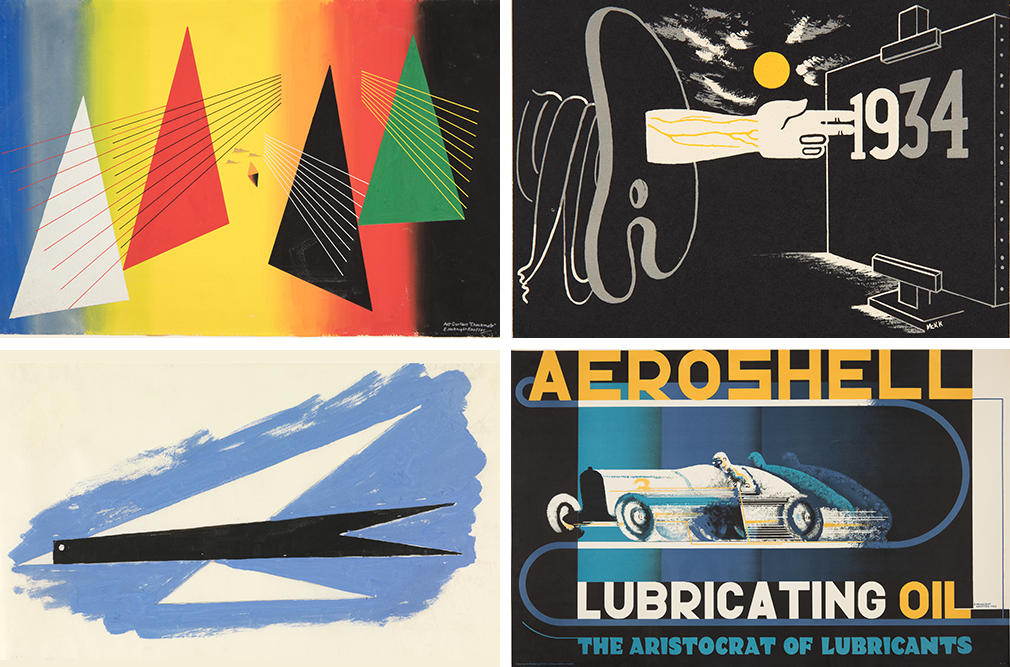
TOP LEFT: Stage design backdrop for Checkmate, ca. 1947; Designed for the Royal Opera House (London, England); (Photo by Matt Flynn © Smithsonian Institution). TOP RIGHT: Study for Quickest Way by Air Mail, 1935; Designed for British General Post Office (London, England) (Photo by Matt Flynn © Smithsonian Institution). BOTTOM LEFT: Card, 1934, 1933 (Photo by Matt Flynn © Smithsonian Institution). BOTTOM RIGHT: Poster, Aeroshell Lubricating Oil, 1932; Published by Shell-Mex and B.P. Ltd. (Merrill C. Berman Collection).

LEFT: Poster, Power, The Nerve Centre of London’s Underground, 1930, printed 1931 (Photo by Matt Flynn © Smithsonian Institution). CENTER: Poster, Shop between 10 and 4, the Quiet Hours, 1930 (Merrill C. Berman Collection). RIGHT: Poster, Yugoslav People Led by Tito, 1944; Published by The United Committee of South-Slavic Americans (Chicago, Illinois, USA); (Photo by Matt Flynn © Smithsonian Institution).
The unfortunate postponement of the exhibit is palpable. It promises to be an eye opener and hopefully will attract a large in-person number of culturally starved visitors at the Cooper Hewitt when Covid-19 loosens its grip.
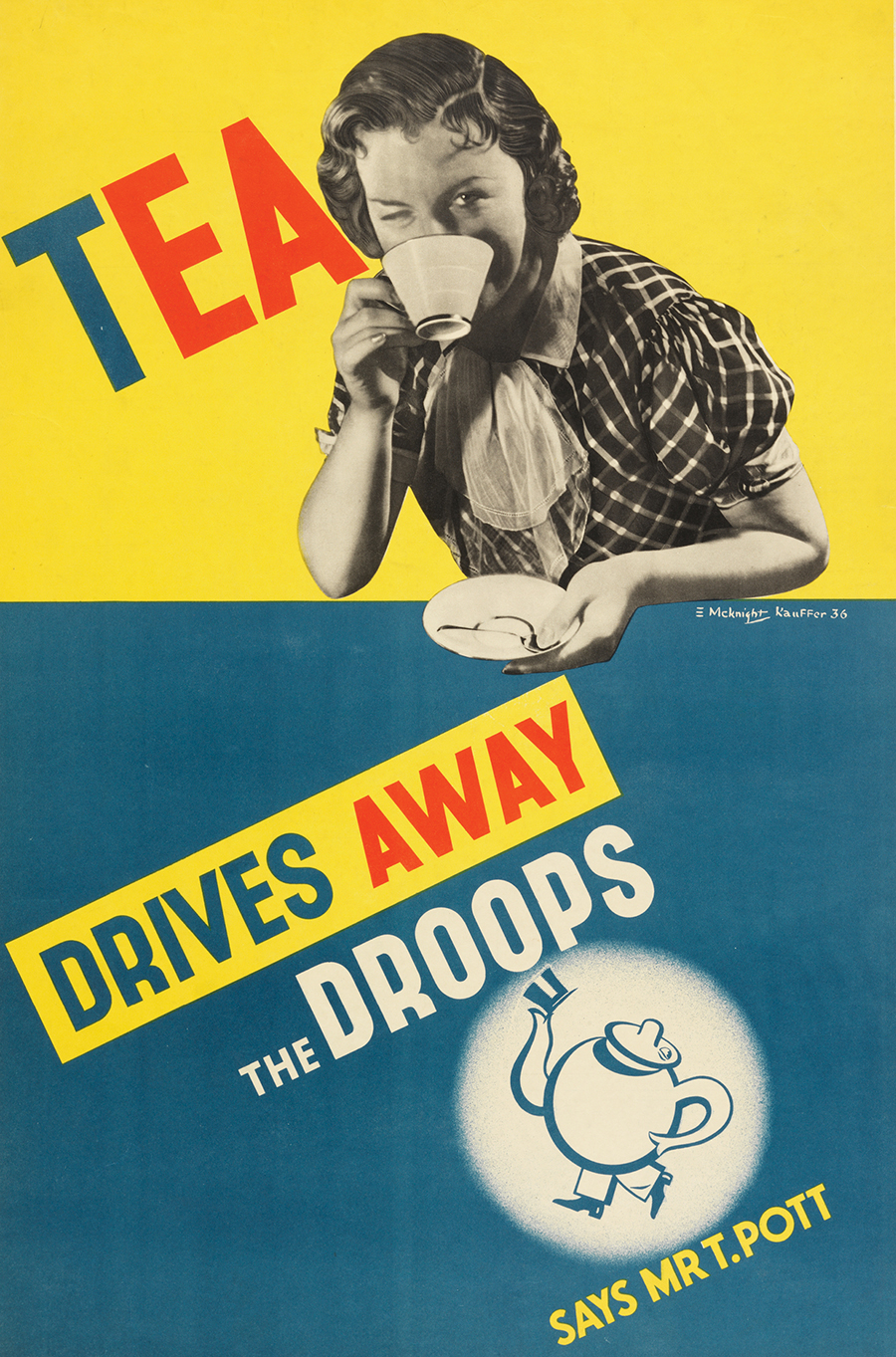
Poster, Tea Drives Away the Droops, 1936; Empire Tea Market-Expansion Board (Cooper Hewitt, Smithsonian Design Museum; Photo by Matt Flynn © Smithsonian Institution).

LEFT TO RIGHT: Book cover, The Week-End Book: A Sociable Anthology, 1924 (Private Collection. Photo by Hugh Gilbert). Book cover, The Meditations of a Profane Man, 1925 (Courtesy of Shapero Rare Books). Book cover, Murder by Latitude,1930. (Photo by Matt Flynn © Smithsonian Institution). Book cover, Babel, 1923); )Photo by Matt Flynn © Smithsonian Institution).
Still, it is a shame that “Ted” (as his friends knew him) Kauffer is not as well appreciated in the United States as other Moderns, in part owing to his move to London in the 1920s. Yet he made a huge contribution to the practice through his various experiments with abstract, reductive and inductive work applied to commercial art. While it must be disappointing for those who worked so hard to acquire and assemble the exhibition materials, and although an alternative timeframe is inevitable, a beautifully designed and illustrated accompanying book is available and more than merely a consolation. E. McKnight Kauffer: The Artist in Advertising (superbly designed by Lucinda Hitchcock and published by Rizzoli/Cooper Hewitt) with essays by Condell, Orr, Teri J. Edelstein, Julie Pastor, Aidan O’Connor Kristina Parsons, Caroline O’Connell, James Smalls, Juliet Kinchin, Kimberly Randall and including my own contribution on the troubled yet prolific period that he experienced while living in New York leading to his untimely death, is an intelligently edited, richly visual (with many lesser known works), superlative addition to design history. It provides an extensive overview of McK’s varied disciplinary adventures as posterist, illustrator, book jacket, scenic and interior designer, advertising man and his flirtation with Vorticism, commitment to anti-fascism, and his book work in concert with the Harlem Renaissance.
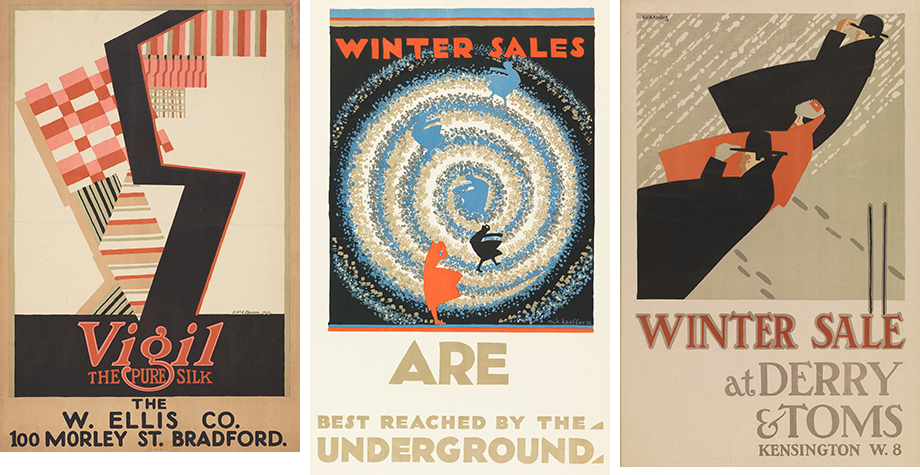
LEFT: Poster, Vigil, The Pure Silk, 1919 (Photo by Matt Flynn © Smithsonian Institution). CENTER: Poster, Winter Sales Are Best Reached by the Underground, 1922 (Photo by Matt Flynn © Smithsonian Institution). RIGHT: Poster, Winter Sale at Derry & Toms, 1919 (Private Collection; Photo by Hugh Gilbert).

LEFT: Poster, Museum of Natural History, 1923 (Photo by Matt Flynn © Smithsonian Institution). CENTER: Poster, Exhibition of Modern Art, The London Group, Mansard Gallery, 1919 (Photo by Matt Flynn © Smithsonian Institution). RIGHT: Poster, London History at the London Museum, 1922, printed 1923 (Photo by Matt Flynn © Smithsonian Institution).
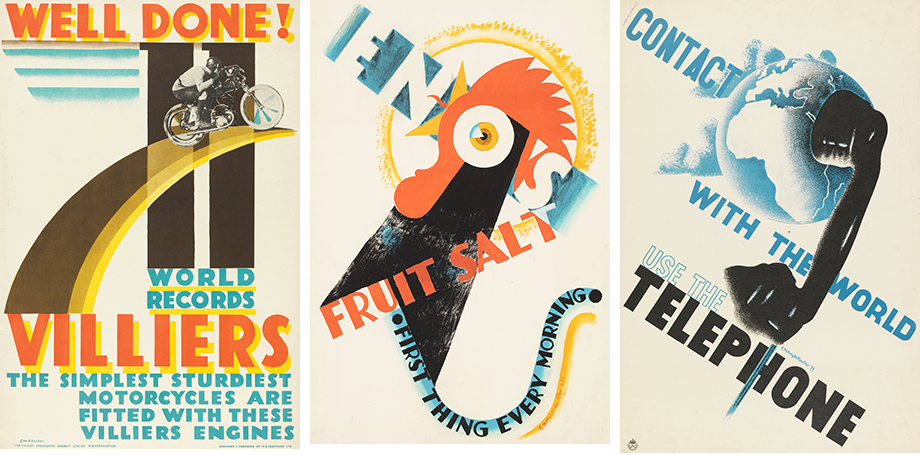
LEFT: Poster, Well Done! 11 World Records, Villiers, ca. 1928 (Photo by Matt Flynn © Smithsonian Institution). CENTER: Drawing, Design for Eno’s Fruit Salt, 1931 (Photo by Matt Flynn © Smithsonian Institution). RIGHT: Poster, Contact with the World, Use the Telephone, 1934 (Photo by Matt Flynn © Smithsonian Institution ).
Thank you, Rizzoli for making the book available and for not making us (and me, in particular) suffer waiting for this significant volume. Here’s hoping that the virus “will just disappear” so the Cooper Hewitt can reschedule its opening. Patience is virtue and the Kauffer exhibit is well worth waiting for.
Observed
View all
Observed
By Steven Heller
Related Posts
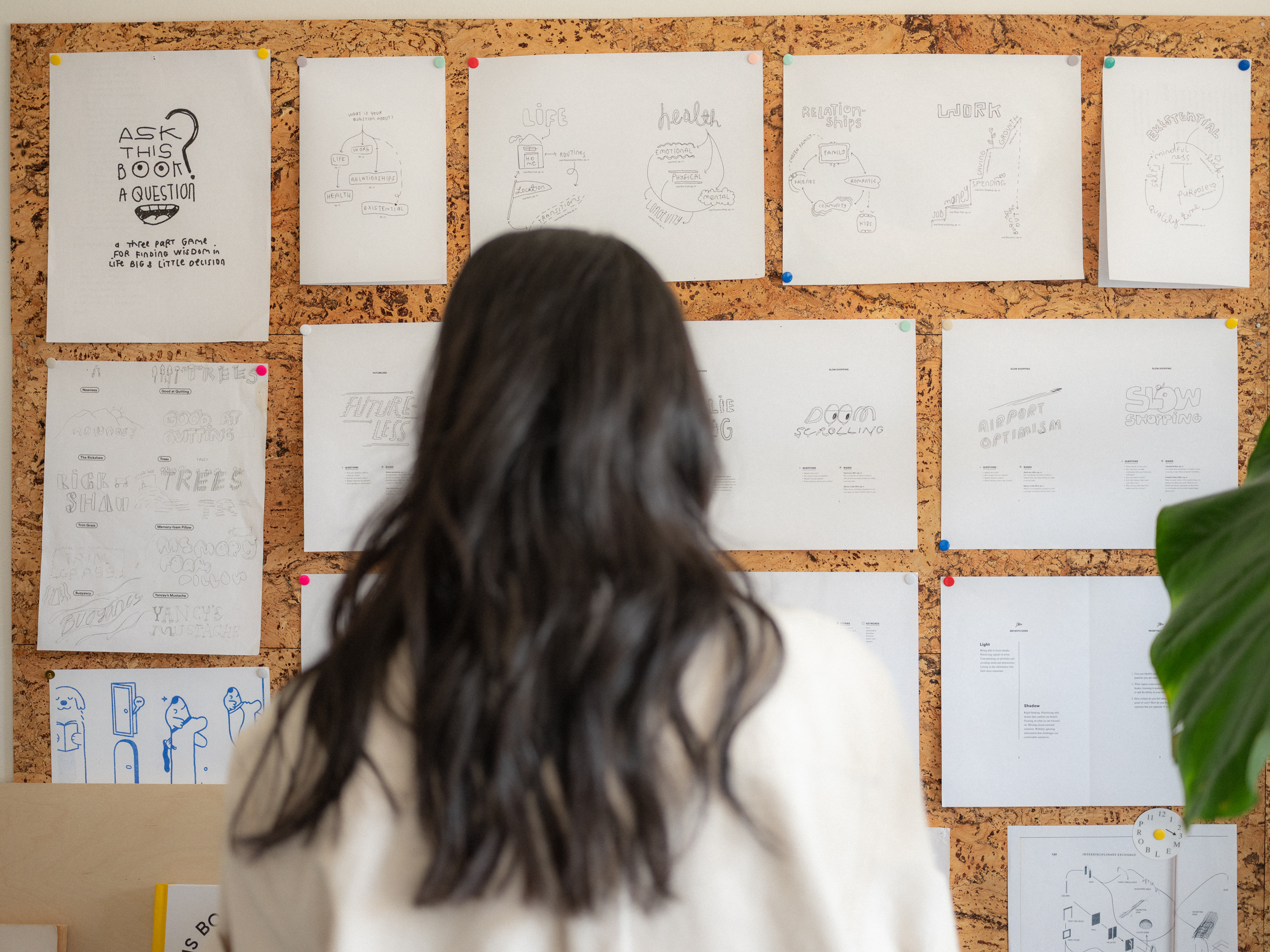
Innovation
Vicki Tan|Books
How can I design at a time like this?

Civic Life
Bert de Muynck|Essays
Walkie talkie: An architect-turned-tour guide on designing presence in Lisbon

Business
Courtney L. McCluney, PhD|Essays
Rest as reparations: reimagining how we invest in Black women entrepreneurs

Design Impact
Seher Anand|Essays
Food branding without borders: chai, culture, and the politics of packaging
Related Posts

Innovation
Vicki Tan|Books
How can I design at a time like this?

Civic Life
Bert de Muynck|Essays
Walkie talkie: An architect-turned-tour guide on designing presence in Lisbon

Business
Courtney L. McCluney, PhD|Essays
Rest as reparations: reimagining how we invest in Black women entrepreneurs

Design Impact
Seher Anand|Essays

 Steven Heller is the co-chair (with Lita Talarico) of the School of Visual Arts MFA Design / Designer as Author + Entrepreneur program and the SVA Masters Workshop in Rome. He writes the Visuals column for the New York Times Book Review,
Steven Heller is the co-chair (with Lita Talarico) of the School of Visual Arts MFA Design / Designer as Author + Entrepreneur program and the SVA Masters Workshop in Rome. He writes the Visuals column for the New York Times Book Review,